|
|
Alberto Ginastera (Composer) |
|
Born: April 11, 1916 - Buenos Aires, Argentina
Died: June 25, 1983 - Geneva, Switzerland |
|
The greatly talented Argentinean composer, Alberto Evaristo Ginastera, was born in Buenos Aires to a Catalan father and an Italian mother. He took private lessons in music as a child; then entered the National Conservatory of Music in Buenos Aires, where he studied composition with José Gil, Athos Palina, and José André; also took piano lessons with Argenziani. He began composing in his early youth; in 1934 he won 1st prize of the musical society El Únisono for his Piezas Infantiles for piano. His next piece of importance was Impresiones de la Puna, for flute & string quartet (1934), in which he made use of native Argentine melodies and rhythms; he discarded it, however, as immature; he withdrew a number of his other works, some of them of certain value; for instance, his Concierto argentino, for piano & orchestra (1935), and his Symphony No. 1 ("Porteña) (1942) (which may be identical in its musical material with Estancia, Op. 8 (1941)). Also withdrawn was his Symphony No. 2 ("Elegíaca") (1944), even though it was successfully performed.
As a young professor, Alberto Ginastera taught at the Liceo Militar General San Martín. In 1946-1947 he travelled to the USA on a Guggenheim fellowship, and studied with Aaron Copland at Tanglewood. Returning to Argentina, he co-founded the League of Composers and served as director of the Conservatory of the province of Buenos Aires in La Plata (1948-1952; 1956-1958). He then taught at the Argentine Catholic University and also was a professor at the University of La Plata.
Alberto Ginastera moved back to the USA in 1968 and then in 1970 to Europe and lived mostly in Geneva. He died in Geneva, Switzerland, at the age of 67 and was buried in the Cimetière des Rois there.
Alberto Ginastera was married to the pianist Mercedes de Toro in 1941. After their divorce in 1965, he married the Argentine cellist Aurora Natola, for whom he wrote the Sonata for violoncello & piano, Op. 49 (1979), which she played in New York on December 13, 1979, and his Cello Concerto No. 2, Op. 50 (1980-1981), which she performed in Buenos Aires on July 6, 1981.
Among his notable students were Ástor Piazzolla (who studied with him in 1941), Alcides Lanza, Waldo de los Ríos, Jacqueline Nova and Rafael Aponte-Ledée. |
|
Music |
|
Alberto Ginastera is considered one of the most important Latin American classical composers. He grouped his music into three periods: "Objective Nationalism" (1934-1948), "Subjective Nationalism" (1948-1958), and "Neo-Expressionism" (1958-1983). Among other distinguishing features, these periods vary in their use of traditional Argentine musical elements. His Objective Nationalistic works often integrate Argentine folk themes in a straightforward fashion, while works in the later periods incorporate traditional elements in increasingly abstracted forms. Much of his works were inspired by the Gauchesco tradition. This tradition holds that the Gaucho, or landless native horseman of the plains, is a symbol of Argentina.
From his earliest steps in composition, Alberto Ginastera had an almost amorous attachment for the melodic and rhythmic resources of Argentine folk music; and he evolved a fine harmonic and contrapuntal setting congenial with native patterns. His first significant work in the Argentine national idiom was Panambí, Op. 1 (1934-1937), a ballet composed in 1935 and performed at the Teatro Colón in Buenos Aires on July 12, 1940. There followed a group of Danzas argentinas, Op. 2 (1937); in 1938 he wrote 2 songs, the first one, Canción árbol del olvido, is a fine evocation of youthful love; it became quite popular. In 1941 he was commissioned to write a ballet for the American Ballet Caravan., to be called Estancia, Op. 8 (1941); the music was inspired by the rustic scenes of the pampas; a suite from the score was performed at the Teatro Colón on May 12, 1943; and the complete work was brought out there on August 19, 1952. A series of works inspired by native scenes and written for various instrumental combinations followed, all infused with Ginastera’s poetic imagination and brought to realisation with excellent technical skill. Soon, however, he began to search for new methods of musical expression, marked by modern and sometimes strikingly dissonant combinations of sound, fermented by asymmetrical rhythms. Of these works, one of the most remarkable is Cantata para América mágica, for dramatic soprano and 53 percussion instruments, Op. 27 (1960), to apocryphal pre-Colombian texts, freely arranged by Ginastera it was first performed in Washington, D.C., on April 30, 1961, with excellent success. . Its West Coast premiere was performed by the Los Angeles Percussion Ensemble under Henri Temianka and William Kraft at UCLA in 1963.
An entirely new development in Alberto Ginastera’s evolution came with his first opera Don Rodrigo, Op. 31 (1963-1964), produced on July 24, 1964, at the Teatro Colón. In it he followed the general formula of Alban Berg‘s Wozzeck in its use of classical instrumental forms, such as rondo, suite, scherzo, and canonic progressions; he also introduced Sprechstimme. In 1964 he wrote the Cantata Bomarzo, for soloists, narrator, & chamber orchestra, Op. 32 (1964), on a commission from the Elizabeth Sprague Coolidge Foundation in Washington, D.C. He used the same libretto by Manuel Mujica Láinez in his opera Bomarzo, Op. 34 (1966-1967), which created a sensation in its production in Washington, D.C., on May 19, 1967, by its unrestrained spectacle of sexual violence. It was announced for performance at the Teatro Colón on August 9, 1967, but it was cancelled at the order of the Argentine government because of its alleged immoral nature. This opera was banned in Argentina until 1972. The score of Bomarzo reveals extraordinary innovations in serial techniques, with thematical employment not only of different chromatic sounds, but also of serial progressions of different intervals. His last opera Beatrix Cenci, Op. 38 (1971), based on the play The Cenci (1819) by Percy Bysshe Shelley, commissioned by the Opera Society of Washington, D.C., and produced there on September 17, 1971, concluded his operatic trilogy.
Among instrumental works of Alberto Ginastera’s last period, the most remarkable was his Piano Concerto No. 2, Op. 39 (1972), based on a tone-row derived from the famous dissonant opening of the finale of L.v. Beethoven’s Symphony No. 9; the 2nd movement of the concerto is written for the left hand alone. |
|
The progressive rock group Emerson, Lake & Palmer brought Ginastera attention outside of modern classical music circles when they adapted the fourth movement of his first piano concerto and recorded it on their popular album “Brain Salad Surgery” under the title "Toccata". They recorded the piece not only with Ginastera's permission, but with his endorsement. In 1973, when they were recording the album, Keith Emerson met with Ginastera at his home in Switzerland and played a recording of his arrangement for him. Ginastera is reported to have said, "Diabolico!". Emerson misunderstood Ginastera's meaning: Ginastera spoke almost no English and meant that their interpretation was frightening, which had been his intent when he wrote it; Emerson, being British, took it to mean "awful". Emerson was so upset that he was prepared to scrap the piece until Ginastera's wife intervened saying that he approved. Ginastera later said, "You have captured the essence of my music, and no one's ever done that before." This experience is detailed in the liner notes to “Brain Salad Surgery”. Emerson would later go on to release an adaptation of one of the pieces from Ginastera's Suite de Danzas Criollas entitled "Creole Dance". "Toccata" also gained fame as the theme to the New England cult TV show Creature Double Feature. Italian neo-classical electric guitarist Alex Masi has also recorded an adaptation of "Toccata," one strongly based on the aforementioned ELP version, rather than the original orchespiece. It can be found on 1989's "Attack of the Neon Shark".
A portion of Ginastera's Piano Sonata No. 1 is performed in the movie The Competition, and the piece is included in the movie soundtrack. |
|
Works |
|
Opera:
Don Rodrigo, Op. 31 (1963-1964)
Bomarzo, Op. 34 (1966-1967), banned in Argentina until 1972
Beatrix Cenci, Op. 38 (1971), based on the play The Cenci (1819) by Percy Bysshe Shelley
Ballet:
Panambí, Op. 1 (1934-1937)
Estancia, Op. 8 (1941)
Orchestral:
Obertura para el "Fausto" criollo, Op. 9 (1943)
Ollantay: 3 Symphonic Movements, Op. 17 (1947)
Variaciones concertantes, Op. 23 (1953)
Pampeana No. 3, Op. 24 (1954)
Concerto per corde, Op. 33 (1965)
Estudios Sinfonicos, Op. 35 (1967)
Popol Vuh, Op. 44 (1975-1983, left incomplete at the composer's death)
Glosses sobre temes de Pau Casals, Op. 46 (1976)
Glosses sobre temes de Pau Casals, Op. 48 (1976-1977)
Iubilum, Op. 51 (1979-1980)
Concertante:
Harp Concerto, Op. 25 (1956-1965, dedicated to Nicanor Zabaleta; premiered by him with Eugene Ormandy and the Philadelphia Orchestra in 1965)
Piano Concerto No. 1, Op. 28 (1961)
Cadenza e varianti, for piano & orchestra
Scherzo allucinante, for piano & orchestra
Adagissimo, for piano & orchestra
Toccata concertata, for piano & orchestra
Piano Concerto No. 2, Op. 39 (1972)
32 variazioni sopra un accordo di Beethoven, for piano & orchestra
Scherzo per la mano sinistra, for piano & orchestra
Quasi una fantasia, for piano & orchestra
Cadenza, for piano & orchestra
Finale prestissimo, for piano & orchestra
Violin Concerto, Op. 30 (1963)
Cello Concerto No. 1, Op. 36 (1968)
Cello Concerto No. 2, Op. 50 (1980-1981)
Piano:
Danzas argentinas, Op. 2 (1937)
Tres piezas, Op. 6 (1940)
Malambo, Op. 7 ( 1940)
Pequena Danza (from the ballet Estancia, Op. 8) (1941)
12 Preludios americanos, Op. 12 (1944)
Suite de danzas criollas, Op. 15 (1946, revised 1956)
Rondó sobre temas infantiles argentinos, Op. 19 (1947)
Piano Sonata No. 1, Op. 22 (1952)
Arrangement of an Organ Toccata by Domenico Zipoli (1970)
Piano Sonata No. 2, Op. 53 (1981)
Piano Sonata No. 3, Op. 54 (1982)
Danzas argentinas Para los ninos (Unfinished)
Moderato: para Alex
Paisaje: para Georgina
Organ:
Toccata, Villancico y Fuga, Op. 18 (1947)
Variazioni e Toccata sopra Aurora lucis rutilat, Op. 52 (1980): Variación 1: Maestoso, Variación 2: Tempo giusto, Variación 3: Impetuoso, l'istesso tempo, Variación 4: Vivacissimo, Variación 5: L'istesso tempo, Variación 6: L'istesso tempo, Variación 7: Sereno, Variación 8: Estatico, Variación 9: Quasi allegretto, ariación 10: Pastorale, Variación 11: Andantino poetico, Variación 12: Lento, Toccata - Finale: Tema
Vocal/Choral:
2 canciones, for voice & piano, Op. 3 (1938)
Cantos del Tucumán, for voice, flute, harp, percussion, & violin, Op. 4 (1938)
Psalm 150, for chorus, Op. 5 (1938)
5 canciones populares argentinas, for voice & piano, Op. 10 (1943)
Las horas de una estancia, for voice & piano, Op. 11 (1943)
Hieremiae prophetae lamentationes, for chorus, Op. 14 (1946)
Cantata para América mágica, for dramatic soprano & percussion orchestra, Op. 27 (1960)
Cantata Bomarzo, for soloists, narrator, & chamber orchestra, Op. 32 (1964)
Milena, for soprano & orchestra, Op. 37 (1971)
Serenata, for baritone, violoncello, wind quintet, percussion, harp, & double bass, Op. 42 (1973)
Turbae ad passionem gregorianam, for soloists, chorus, boy's chorus & orchestra, Op. 43 (1975)
Canción del beso robado, for voice & piano (19??)
Chamber/Solo Instrumental:
Duo, for flute & oboe, Op. 13 (1945)
Pampeana No. 1, for violin & piano, Op. 16 (1947)
String Quartet No. 1, Op. 20 (1948)
Pampeana No. 2, for violoncello & piano, Op. 21 (1950)
String Quartet No. 2, Op. 26 (1958, revised 1968)
Piano Quintet, Op. 29 (1963)
String Quartet No. 3, for soprano & string quartet, Op. 40 (1973)
Puneña No.1, for flute, Op. 41 (1973, left incomplete at the time of the composer's death)
Puneña No.2 ("Hommage à Paul Sacher"), for violoncello, Op. 45 (1976)
Sonata, for guitar, Op. 47 (1976, Rev. 1981)
Sonata, for violoncello & piano, Op. 49 (1979)
Works withdrawn by the composer (without opus number):
Piezas Infantiles, for piano (1934)
Impresiones de la Puna, for flute & string quartet (1934)
Concierto argentino, for piano & orchestra (1936)
El arriero canta, for chorus (1937)
Sonatina, for harp (1938)
Symphony No. 1 ("Porteña) (1942)
Symphony No. 2 ("Elegíaca") (1944)
Incidental/Film Music:
Don Basilio malcasado (1940)
Doña Clorinda la descontenta (1941)
Malambo (1942)
Rosa de América (1945)
Las antiguas semillas (1947)
Nace la libertad (1949)
El puente (1950)
Facundo, el tigre de los llanos (1952)
Caballito criollo (1953)
Su seguro servidor (1954)
Los maridos de mamá (1956)
Enigma de mujer (1956)
Primavera de la vida (1958)
Hay que bañar al nene (1958)
El límite (1958)
A María del corazón (1960)
La doncella prodigiosa (1961) |
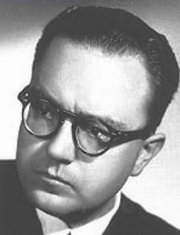
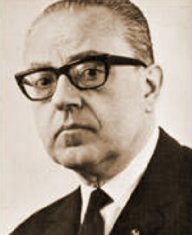

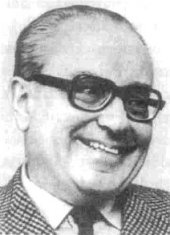
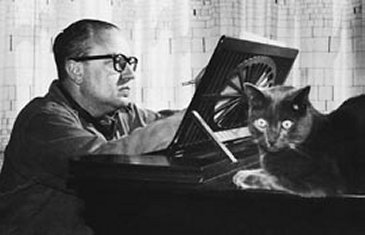


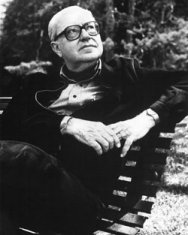
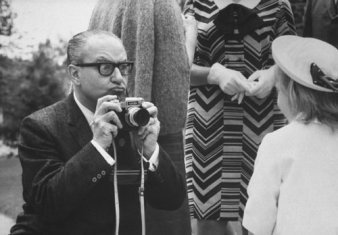
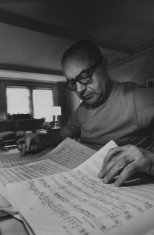
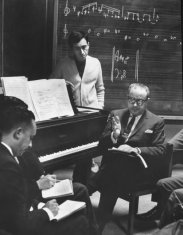
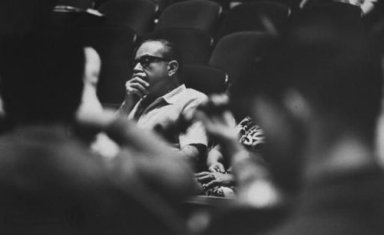 |
|
Source: Baker’s Biographical Dictionary of 20th Century Classical Musicians (1997); Wikipedia Website (March 2013)
Contributed by Aryeh Oron (May 2013) |
|
Alberto Ginastera : Short Biography | Bach-inspired Piano Works: Works | Recordings | Other Arrangements/Transcriptions: Works | Recordings |
|
Links to other Sites |
|
Alberto Ginastera (Wikipedia)
Alberto Ginastera - Bio (Naxos) |
Alberto Ginastera (Fundacion Ostinato – Tripod)
Alberto Ginastera (Boosey & Hawkes) |
|
Bibliography |
|
Deborah Schwartz-Kates . Alberto Ginastera. P.20
Alberto Ginastera, Argentine Cultural Construction, and the Gauchesco Tradition by Deborah Schwartz-Katz, The Musical Quarterly, Summer 2002 |
|
|